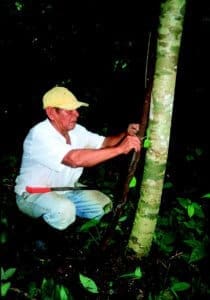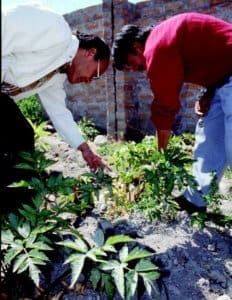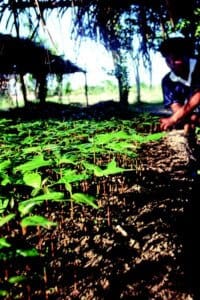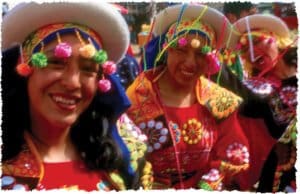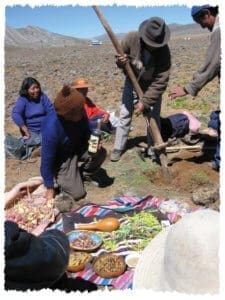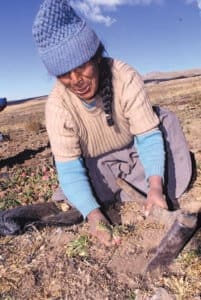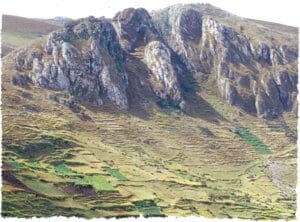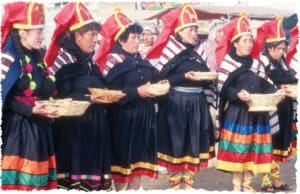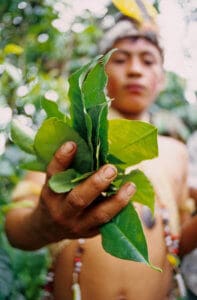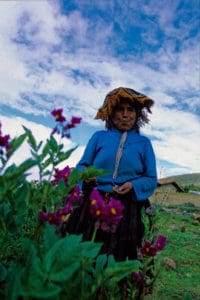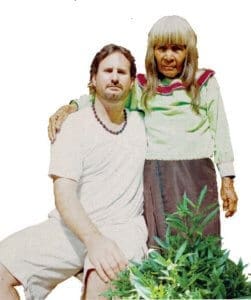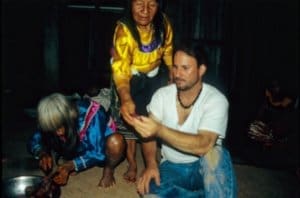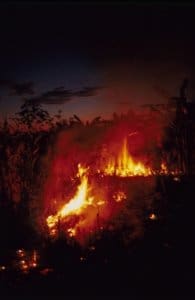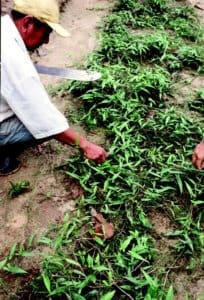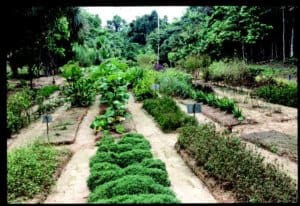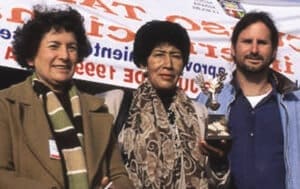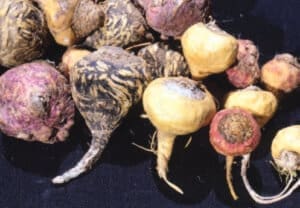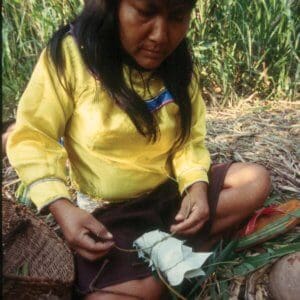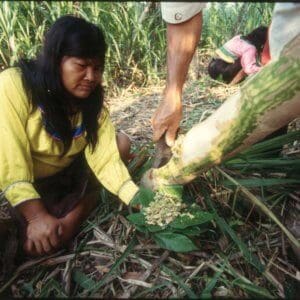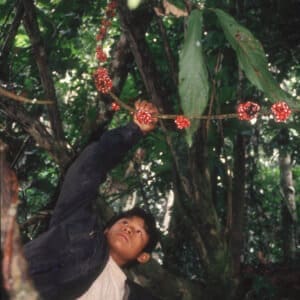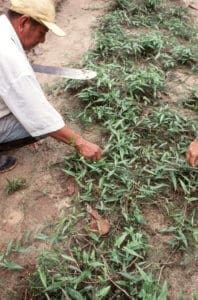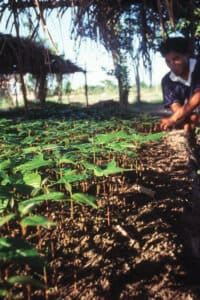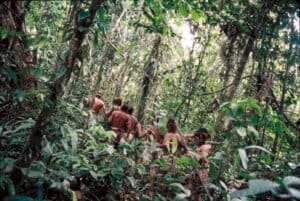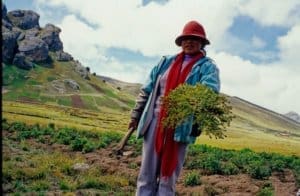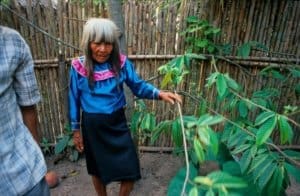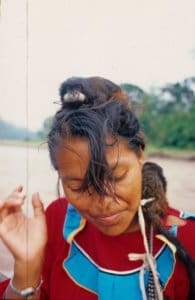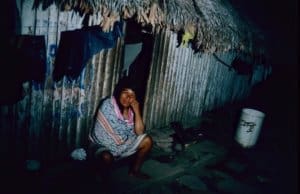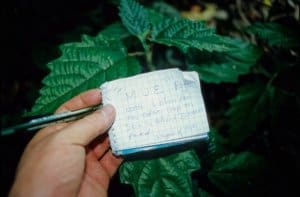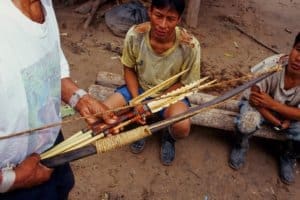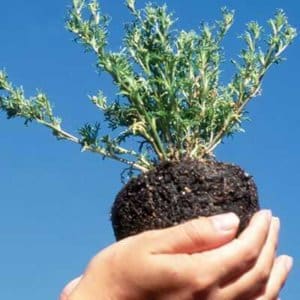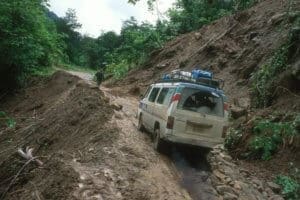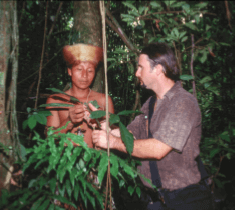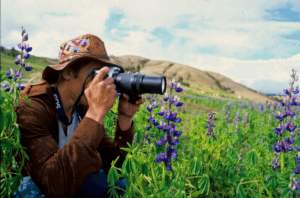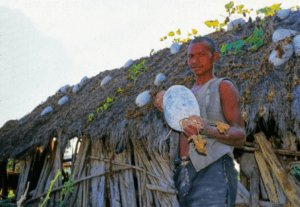My adopted grandmother bent to the dirt floor and coddled the young child who wept profusely from an unknown “susto”, a “bad spirit”...
Voucher specimens of botanicals (top and below) are kept in herbarium collections in order to verify species and to note the distribution and habitat ranges of each species. This data base is also valued for ethnobotanical studies long after traditional peoples have stopped using the native plants or altered their living habits. Today, environmental and cultural pressures contribute directly to the loss of indigenous heritage. This almost always includes the loss of medicinal plants and priceless ethnobotanical data. This hard-won data has been empirically proven after centuries of diligent studies by indigenous physicians who lived in contact with the natural ambiance.
Nursery beds are set up for the cultivation of medicinal trees and shrubs. The young trees are then transplanted back into the forest, or at the edge of grasslands where logging by timber companies or ranching has destroyed the jungle cover.
Maca dancers come out every year in festive costume to celebrate the resurgence of maca as a national crop that is changing their economy.
Peru's high plains: A fickle climate, where frost is constant throughout the year. Our maca growers perform a millennia-old ceremony by offering prayers at the time of harvest and planting. Blessings of distilled caña, wild tobacco, and coca leaf are placed into the earth, along with a morsel of cooked maca for the mountain gods, who are sometimes jealous and stingy with their return.
Sustainable harvest for generations. In Peru, our goals are simple: to produce pure foods that change peoples lives and to support farmers who work in harmony with the environment.
14,000 feet in the Andes, Maca cultivation hit its pinnacle almost a thousand years ago. The rugged terrain and remote locations are some of the most difficult farm lands on earth.
The momentum continues at the ceremonies in the highlands of Peru. The festivities denote the popular resurgence of maca cultivation and its growing use among the women of the Andes to treat hormonal imbalances.
Jerome Black is an Ethnobotanical Researcher who has been working in the Andes and Amazon for more than 12 years. He is the co-founder and research director for ALT laboratories. Yeshun Leopauldina was born in the heart of the jungle and is a trained master herbalist and traditional healer. She has been working in the Amazon for more than 75 years. Together they document traditional remedies, source new drug plants and work to preserve the botanical heritage of the indigenous people of the Amazon. Jerome Black can be contacted at HerbsAmerica@hotmail.com or 541-846-7578
Cultivation techniques for a sustainable yield are metted out under the Amazon’s demanding conditions. Lands once damaged by logging, erosion and cattle ranching are now planted in native medical herbs for export to our laboratories. Here, Amazon Smilax and other herbs are introduced from the wild into garden beds for a more regulated control of harvest
Materia Prima! Extra fine raw material Our raw materials are derived from organically certified farms or wildcrafted under our ‘Sustainable Harvest’™ label. In many regions of the Amazon and Andes, we continue to work with indigenous groups who cultivate endemic medicines in their original, native habitat. In South America many of our staff botanists are leading taxonomic botanists. They maintain collections of plant vouchers, chemical analysis, botanical specimens and a database which is unparalleled in North America. Today, our network of growers and wildcrafters supply the freshest and finest medicinal plants in the industry.
First International Congress on Maca, 1999, Lima, Peru.
Dr. Gloria Chacon - the fi rst to begin scientifi c studies on maca in 1962. Her
work in Peru has helped found an entire industry. Lepidium peruvianum
“chacon’ has been named in her honor.
Doña Elaina - tireless proponent of maca products. Winner of the “Golden
Maca Trophy” presented here in 1999 for quality in production and development.
Jerome Black - Herbs America, Maca Magic founder. The first to cultivate
and distribute live maca root plants in the USA. Began germplasm collections
and cultivar selection of maca in Peruvian Altiplano in 1994.
A troubled battle over the maca farm land arises in 1999. Here, a historical footnote in the balance of power as politicians battle over rights to the world maca exports. Here, Eng. De Las Casa, the Minister of Agriculture bans the export of whole maca root from Peru in a declaration that left poor maca farmers in turmoil and put the control of the world maca harvest into the hands of a few influential companies who had direct ties to the Fujimori government (now exiled to Japan) and under house arrest in Santiago, Chile.
Together, Iporuru leaf and bark, are boiled and concentrated as a remedy for fever, joint, or muscle pain.
Small quids of Iporuru bark and leaf are bundled in a fresh leaf for later addition to the medicinal concoction.
The lower bark of Iporuru can only be harvested when the river is low. It grows back rapidly in the fluvial bayous of Peru's sweltering tropics.
Michiguenga boy in Peru with wild harvested Guarana, a stimulant used to suppress appetite and provide metabolic change.
Lands once damaged by logging, erosion and cattle ranching are now planted in native medical herbs for export to our laboratories.
Here, Amazon Smilax and other herbs are introduced from the wild into garden beds for a more regulated control of harvest.
Nursery beds are setup for the cultivation of medicinal trees and shrubs. The young trees are then transplanted back into the forest or at the edge of grasslands, where logging by timber companies or ranching has destroyed the jungle cover.
Voucher specimens of botanicals (above) are kept in herbarium collections in order to verify species and to note the distribution and habitat ranges of each species.
Peru's high plains: A fickle climate, where frost is constant throughout the year. Our maca growers perform a millennia-old ceremony by offering prayers at the time of harvest and planting. Blessings of distilled caña, wild tobacco, and coca leaf are placed into the earth, along with a morsel of cooked maca for the mountain gods, who are sometimes jealous and stingy with their return.



